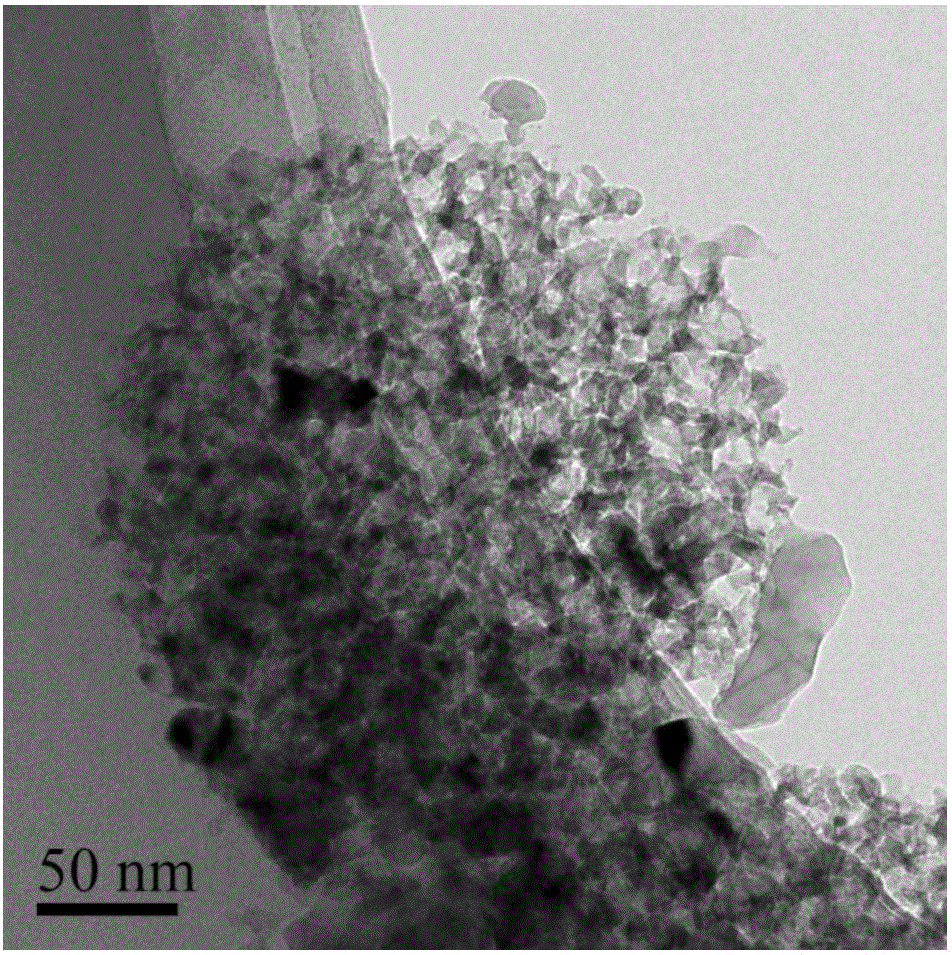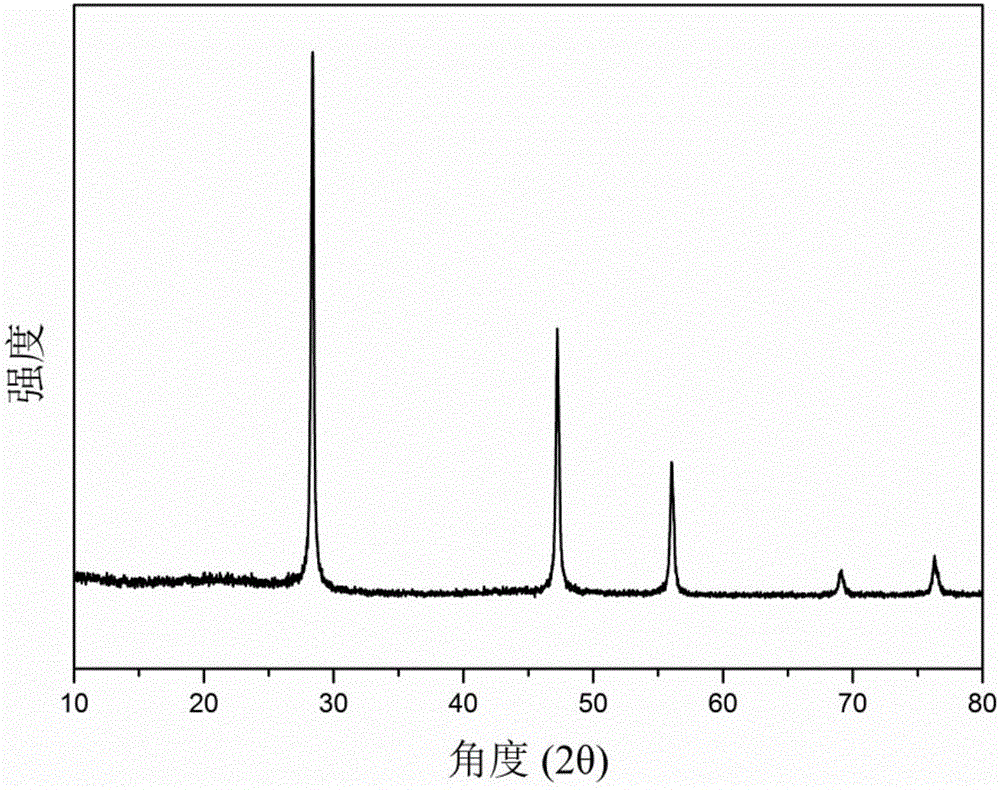Core-shell structure silicon carbon composite material and preparation method thereof
A silicon-carbon composite material, core-shell structure technology, applied in structural parts, electrical components, battery electrodes, etc., can solve the problems of reducing specific capacity and rate performance, affecting lithium ion interface transfer, and reducing material specific capacity, etc. Conductivity, preventing breakage and scattering, and ensuring stability
- Summary
- Abstract
- Description
- Claims
- Application Information
AI Technical Summary
Problems solved by technology
Method used
Image
Examples
Embodiment 1
[0052] Take 1g of silica balls with a diameter of about 250nm as raw materials, mix them with 0.8g of metal magnesium powder, place them in a closed environment filled with argon, and raise the temperature to 700°C at a heating rate of 5°C / min for 6 hours. After the reaction, the product was taken out and dissolved in 1mol / L hydrochloric acid to react for 6h. After filtering and drying, the intermediate product Si@SiO obtained above was 2 Dissolve it with phenolic resin in ethanol solvent at a mass ratio of 1:1, stir at 80°C until the ethanol is completely volatilized, grind the mixture finely, and then raise the temperature to 800°C at a heating rate of 5°C / min for 2 hours in an argon atmosphere. . The product obtained after the reaction is C@Si@SiO 2 It was dissolved in 5% hydrofluoric acid and reacted for 0.5h, filtered, washed and dried to obtain the reaction product C@Si. The X-ray diffraction pattern of its product C@Si is as follows image 3 As shown, the transmissi...
Embodiment 2
[0055] Take 1g of silica balls with a diameter of about 100nm as the raw material, mix them evenly with 0.5g of metal magnesium powder, place them in a closed environment filled with argon and hydrogen, and raise the temperature to 650°C at a rate of 2°C / min to react for 2h . After the reaction, the product was taken out and dissolved in 0.5 mol / L sulfuric acid to react for 4 hours. After filtration and drying, the intermediate product Si@SiO obtained above 2 Dissolve in the aqueous solvent with sucrose at a mass ratio of 1:10, stir at 100°C until the water evaporates completely, grind the mixture finely, and raise the temperature to 700°C at a heating rate of 10°C / min for 4 hours under nitrogen atmosphere. The product obtained after the reaction is C@Si@SiO 2 Dissolve in hydrofluoric acid with a mass fraction of 2% and react for 2 hours, filter, wash and dry to obtain the reaction product C@Si. The diameter of the porous nano-silicon core of the obtained product is about 1...
Embodiment 3
[0058] Take 1g of silica particles with a diameter of about 500nm as a raw material, mix it with 0.7g of metal magnesium powder, place it in a closed environment filled with argon, and raise the temperature to 700°C at a heating rate of 10°C / min for 4 hours. After the reaction, the product was taken out and dissolved in 2mol / L hydrochloric acid for 8 hours. After filtration and drying, the intermediate product Si@SiO obtained above 2 Dissolve polyvinyl alcohol in n-butanol solvent at a mass ratio of 1:15, stir at 90°C until the ethanol is completely volatilized, grind the mixture finely, and heat up at a rate of 20°C / min under a mixed atmosphere of argon and nitrogen The temperature was raised to 900°C for 6 hours. The product obtained after the reaction is C@Si@SiO 2 Dissolve in hydrofluoric acid with a mass fraction of 10% and react for 0.5 h, filter, wash and dry to obtain the reaction product C@Si. The diameter of the porous nano-silicon core of the obtained product is ...
PUM
| Property | Measurement | Unit |
|---|---|---|
| size | aaaaa | aaaaa |
| thickness | aaaaa | aaaaa |
| thickness | aaaaa | aaaaa |
Abstract
Description
Claims
Application Information
 Login to View More
Login to View More - R&D
- Intellectual Property
- Life Sciences
- Materials
- Tech Scout
- Unparalleled Data Quality
- Higher Quality Content
- 60% Fewer Hallucinations
Browse by: Latest US Patents, China's latest patents, Technical Efficacy Thesaurus, Application Domain, Technology Topic, Popular Technical Reports.
© 2025 PatSnap. All rights reserved.Legal|Privacy policy|Modern Slavery Act Transparency Statement|Sitemap|About US| Contact US: help@patsnap.com



